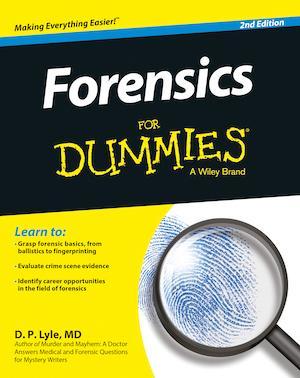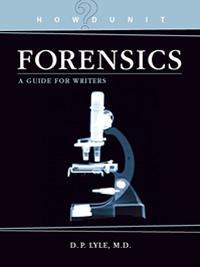
So you do all that forensic science research for your story and find a bunch of cool stuff. Now what? How do you use it to make your story believable, and convoluted, and of course suspenseful.
Here is a post I wrote for Le Coeur de l'Artiste that might help.
Original post is here: http://www.djadamson.com/lartiste/archives/09-2016
When Researching Forensics, Remember to:Make the Time of Death Vague: When your disheveled detective is standing over the body and chatting with the coroner and the subject of the time of death comes up, don't have your coroner/medical examiner say something stupid like, "The victim died at 10:30 last night." There is no way he could know this. The things he uses to determine the time of death during the first 48 hours - - things like body temperature, rigor mortis, and lividity - - aren't very accurate. They are merely suggestions. But by using these techniques, the coroner can at least make an educated guess as to the APPROXIMATE time of death. And it is always a best guess. Realistically he should say something like, "The victim died somewhere between 10 PM and midnight." And that gives you wiggle room in your plot.
Give Your Crime Lab Time to Breathe: Only on television do crime labs get results before the first commercial break. You know, the DNA sample is obtained and three minutes later they have the results, complete with a holographic image of the bad guy. Unfortunately, that is humorously far from reality. DNA analysis, toxicological testing, and most other forensic science techniques take time. The tests not only have to be done, they have to be checked and rechecked, and in high-profile cases, they are often sent out to other labs for corroboration. This takes time. At least days, and often weeks. Remember to allow for this when you're plotting your story as this delay can add tension.
Make the Evidence Difficult to Find or Not Useful: The truth is that evidence is not always present. Of course, the crime scene technicians look for fingerprints, bodily fluids, shoe impressions, hair and fiber, and any other bits of evidence the perpetrator might have deposited at the crime scene. These might or might not be present, and if present might or might not be found, and if found might or might not be useful. If fingerprints are deposited on a window pane, a tile countertop, or some other smooth, hard surface, then they are often easily found and are clear and useful. If they are on a rough surface, such as a wooden slat or concrete, or if they are smeared or contaminated or altered in some way, they might not be useful. The pattern might be disrupted or difficult to see and if so the print is useless. DNA might be found but it might be so damaged from decay or contamination that it is not useful. So make it difficult for your detective. Don't make the evidence jump right into his lap.
Make Everyone Involved in the Investigation Honest and Capable, or Not: The best-selling horror writer John Saul has said that he places his stories in small towns because the cops are stupid. This might be true in many cases, but I think what John means is that they are not sophisticated, experienced, or well-equipped to handle many criminal situations. This might be because they are poorly trained, or never worked in a major city, or solved any major crimes and therefore a murder in their small town might be beyond their capabilities. Or perhaps the city's budget for crime-fighting is so small that they can't afford to hire experienced officers, or forensic experts, or even do autopsies. It might be that those in power are just flat out criminally corrupt, or lazy, or incompetent. If your story is set in a major city, such as Los Angeles, New York, Houston, or Miami, then sophisticated crime-fighting techniques, equipment, labs, and experts are easily available. But if it's set in a small town, none of these are available. Use this to add tension to your story.
Make the Evidence Controversial: Just because a certain individual's fingerprints or DNA or shoe impressions are left at the crime scene, it does not mean that person is the perpetrator of the crime. The thing about evidence is that it creates linkage. It links a person, an object, or a place to another person, object, or place. That is, if Joe's fingerprints are found at the scene of the crime it means that at some point in time Joe was at that location. It does not mean Joe is the one that killed Martha. This is why when police begin their interrogation of Joe they will first ask him if he has been in Martha's home, or if he even knows Martha. If he says yes, he knows her well and has been in her home many times, then there may be a perfectly innocent reason for his fingerprints to be there. If he says no that he does not know her and has never been in her home, then Joe has some explaining to do. Such evidence that points in the wrong direction is very useful for creating classic red herrings in your story.

